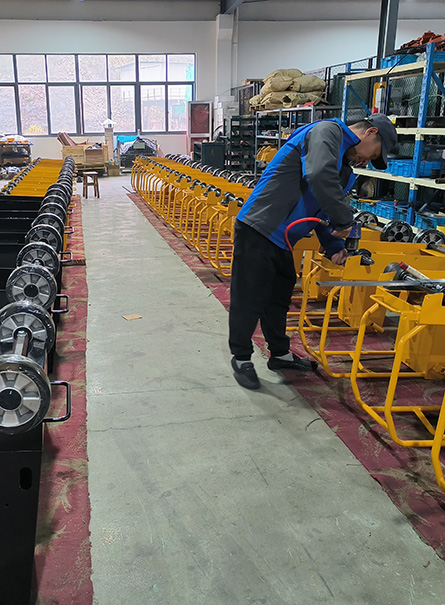Tamping rammers are ideal for deep compaction in clay soils but are unsuitable for granular soils. In contrast, plate compactors, although less powerful, are versatile and can be used effectively on larger areas and with all soil types. The choice between the two depends on the soil type and job size. For diverse projects, having both tools can be beneficial, optimizing time and efficiency.
Distinguishing Between a Rammer and a Plate Compactor
The key distinction between a rammer and a plate compactor lies in their respective compaction methods. A plate compactor employs vibration to compress the soil, making it generally easier to use. In contrast, a rammer utilizes direct force to impact the ground, requiring more strength and attention from the user, as it delivers powerful blows near the operator's feet.
Choosing the Right Soil Compaction Tool
When it comes to soil compaction, selecting the appropriate tool is crucial. Your options are mainly a tamping rammer or a plate compactor. Compacting soil manually is ineffective; thus, using a compactor is essential.
- Compacting Granular Soil:
For soils like gravel, sand, and silt, which don't clump together (known as granular soil), a plate compactor is ideal. It compacts using a blend of force and vibrations, covering a large area efficiently. However, its strength is limited, so it's best to compact in layers of no more than six inches.
- Compacting Cohesive Soil:
For cohesive soils, such as wet, clay-rich soils that retain water, a tamping rammer, also known as a jumping jack, is more effective. This tool can compact deeper, though in smaller areas at a time, using intense impact. Cohesive soil requires a specific moisture level for effective compaction.
- Compacting Large Areas:
In large-scale projects, a plate compactor is often preferable due to its ability to cover extensive areas quickly. While it's suitable for both granular and cohesive soils, layering might be necessary for deeper compaction. For jobs involving primarily granular soil, a plate compactor is necessary to avoid creating holes instead of compacting.
Understanding Plate Compactors and Rammers
- How Plate Compactors Function
Plate compactors operate through vibration to compact soil. The operator moves the machine across the target surface, and its heavy, flat plate vibrates vertically, effectively compressing the soil underneath. This mechanism is particularly efficient for larger, open areas and flat surfaces, making plate compactors a go-to choice for tasks like sub-base preparation, asphalt driveways, and parking lot repairs. They are versatile, able to reach areas inaccessible to rollers.
- Compaction Depth of Plate Compactors
The compaction depth of a plate compactor varies depending on its size and the soil type. For granular soils, larger industrial compactors can work with layers up to 12 inches. In cohesive soils, these depths are typically halved. Smaller compactors should be used for no more than 6-inch layers, with even shallower layers for cohesive soils. It's important to refer to the user manual for specific guidelines.
- Choosing the Right Plate Compactor
When selecting a plate compactor, consider:
- Centrifugal force in pounds
- Vibration per minute (VPM)
- Durability of the plate
- Any additional features needed
Horizont Machinery suggest looking for cast ductile iron plates and higher VPM for asphalt and granular material compaction, focusing on amplitude and weight for performance assessment.
Rammers
- How Rammers Work
Rammers, in contrast to plate compactors, compact soil through direct impact. They deliver strong, concentrated forces at a frequency of about 500-750 blows per minute, effectively reducing voids in the soil and increasing its density. Rammers are best suited for compacting cohesive and semi-cohesive soils, like clay.
- Rammer Compaction Depth and Features
Rammers can compact soil to greater depths than plate compactors, making them valuable in professional settings for efficiency and project speed. When purchasing a rammer, consider:
- Engine type (four-cycle vs. two-cycle)
Features like anti-vibrancy handles for operator comfort
Removable water tanks, shoe stroke technology, compaction force, balance, and blows per minute
Two-cycle engines, still available from manufacturers like Wacker Neuson, offer onsite oil addition, a handy feature for uninterrupted work.
Conclusion
Both plate compactors and rammers have distinct functions and specialties. The choice between them depends on the soil type, project size, and specific compaction needs. Understanding these differences ensures the selection of the right equipment for efficient and effective soil compaction.


